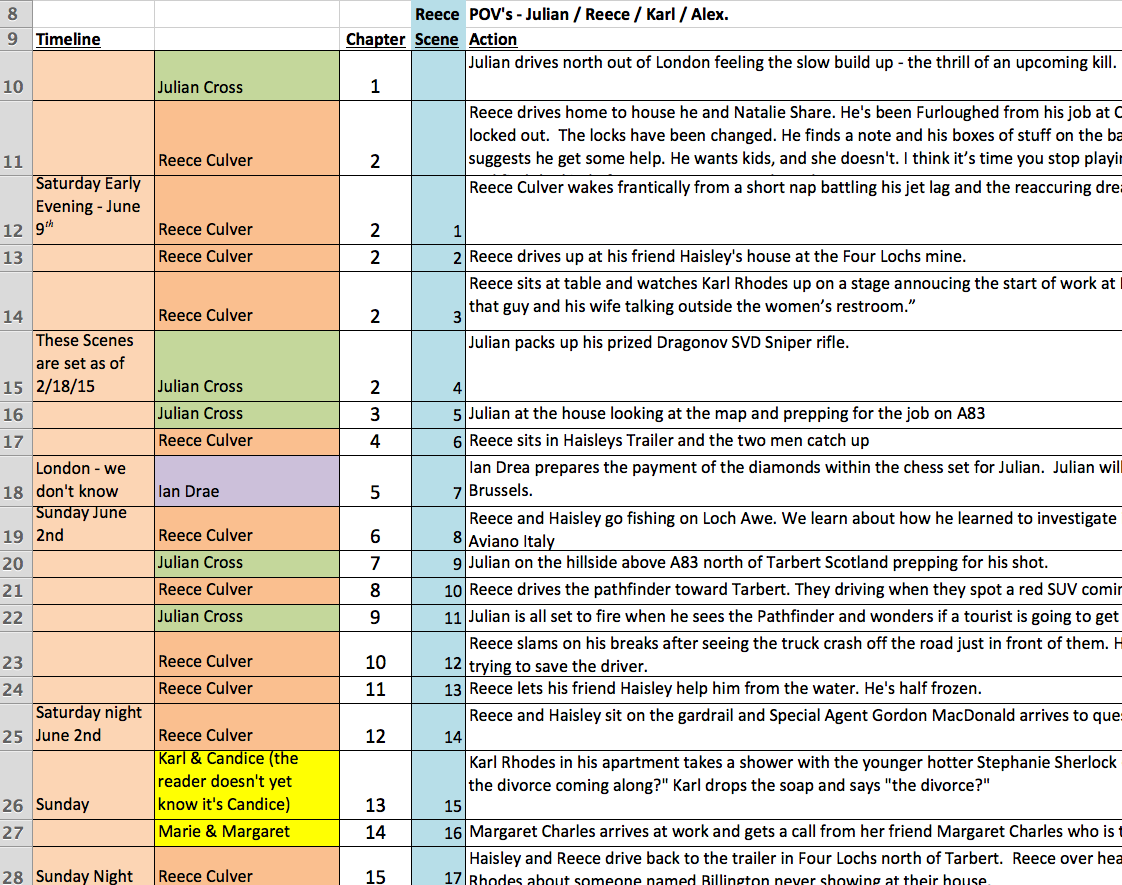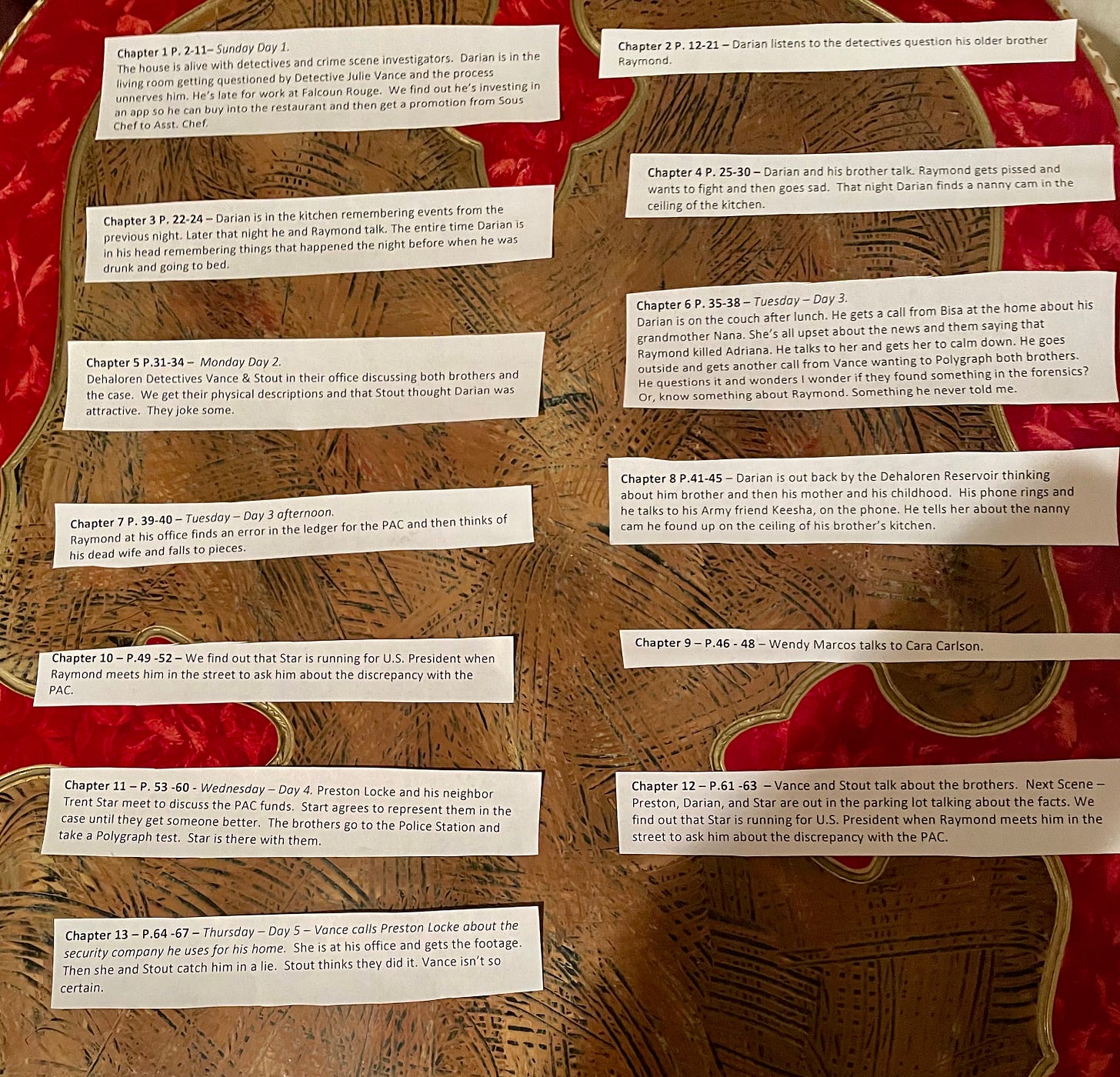In the world of fiction, there are two kinds of authors – The plotter and the Pantser.
A Pantser sits down and writes with no outline or detailed plan. They literally write by the seat of their pants, keeping all the details of their story in their head. Some famous Pantsers are Margaret Atwood and Stephen King. Stephen King has said some harsh words over the years about Plotters. But when you’ve written as many books as he has, you can say whatever you want, and people will still buy your books.
A Plotter starts with an outline and builds their story scene by scene within these initial notes before ever writing a word of their story. Some famous Plotters are J.K. Rowling and John Grisham.
Many Plotters spend the first 6 months on the outline. When I wrote my first book, VENGEANCE, I went to the library and browsed every book they had in the writing section. With some of that knowledge, I sat down and wrote 120 pages of backstory that never made it into the book.
When I first started writing books, I was a Pantser. My first attempt at a complete novel, Rhode Kill, was written entirely by pen in a large college-ruled notebook that I kept in the backseat of my truck and wrote in during my lunch breaks back in the summer of 2010. To this day, that first novel sits in the bottom drawer of my desk.
I remember that summer well. I’d completed a degree in Finance the year before. I made a major change to my career when I went from testing and integrating the electronics systems on satellites to working as a Business Analyst for the same company. For the first couple of years, while I came up to speed in my new career, my mind craved more stimulation. I was reading thrillers by all of the bestselling authors in my spare time. One day I was in the parking lot of King Soopers, and I took out a notebook and started writing. I remember thinking, “how hard could it be to write a thriller novel?”
Over the next couple of weeks, I filled half of the notebook with a story. I’d lay in bed at night and think of the characters - what they looked like, etc. The next day at lunch, I’d write what I’d thought out into my notebook.
I soon realized that without an outline, much of what I was quickly writing down was going to be cut and thrown into a trashcan. Since then, I’ve outlined every book I’ve written. Even with the outline, I still cut out parts of the story. For some books, I’ll rewrite the ending 3 or 4 times.
For my first attempt at an outline, I started with a simple version with the chapter number, pages, and description. A later version was color-coded for each character and laid out in an Excel Spreadsheet.
While working on a book occasionally, I’ll jot down a sentence-long description for what each of the next 10 scenes is about. Then I’ll sit down and write out those 10 scenes at one time.
Here’s an outline I used while writing my 2nd book, SABOTAGE.
Often once the first draft is complete, an author will go back to their outline and fill in details before starting the next draft.
I usually fill in much of the timeline details at this point so I can ensure that it makes sense.
Another tool that Plotter authors use is the Storyboard. Here’s an example of some scenes laid out from an early draft of my new book, THE INTRUSION. Sometimes I’ll print out the descriptions of all of the scenes in the book, and then I’ll move them around to fix areas of the book where there are plot holes. Or I’ll see that one of my secondary characters dropped out of the book on page 120 and doesn’t reappear until page 247.
One other tool I use is my mind. Some mornings I’ll open my eyes and realize that I still have an hour or two till I have to get up. I’ll close my eyes and start thinking about the book I’m working on. As I lay there, I’ll get very close to falling asleep and know that if I stop thinking about the book, I’ll drift back to sleep. It’s in that semiconscious state that I’ll come up with solutions to an area of the book that I’m not satisfied with. When I was first starting to write, I did this same thing but worried I’d forget the new scenes I’d just dreamt up. Over time I came to the conclusion that if a thought was worthy of making it into the book, I’d remember it.
Thanks for your time. I hope you’re enjoying Seriously Serial Writing.
Let me hear your comments your questions.
Take care!





Thank you for sharing your process. I tend to heed a graphical/nonlinear layout— a brain map- still plotting- but easier on my artsy eye. Thanks again!